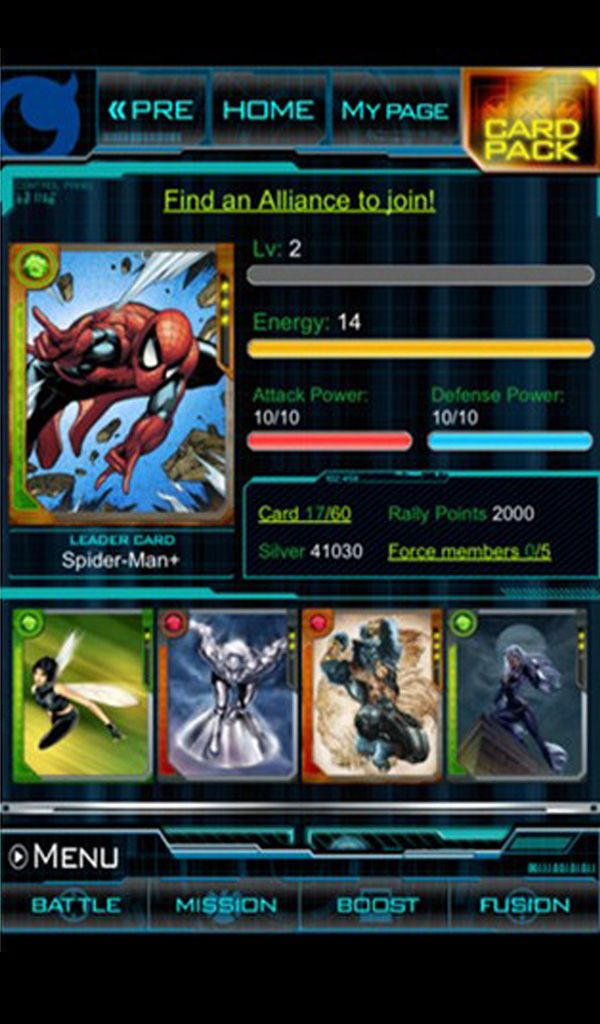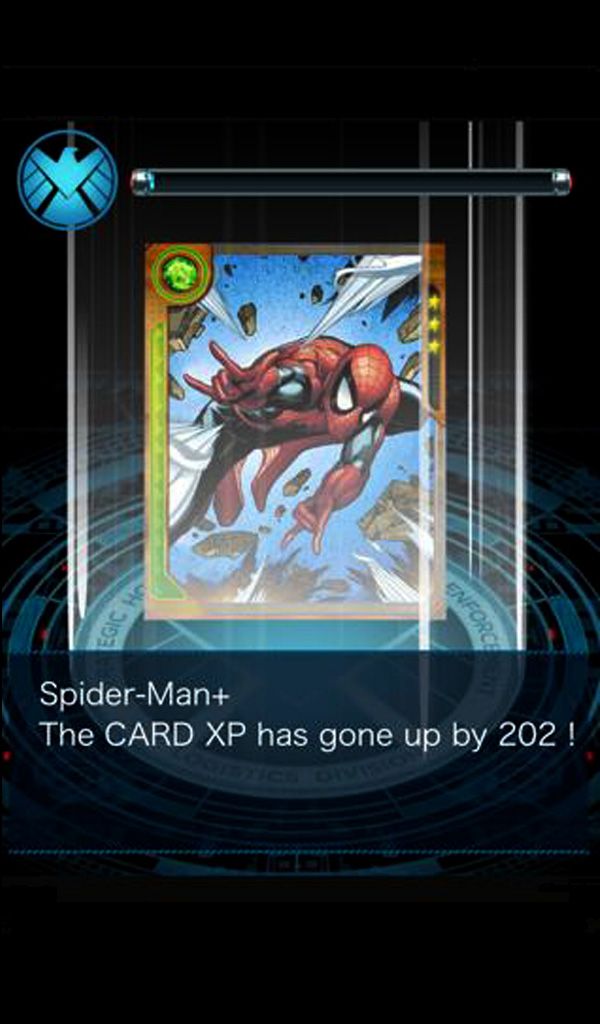I’m not really a big fan of formulaic swaps, even if you do put one of my biggest fandoms on its face. If you’ve played Rage of Bahamut, then you’ve already played Marvel: War of Heroes before you've even downloaded the latter. But then, most of you, including me, would have only seen the product name, and not consider who made it and thought that it might just be the same thing. Or, like me, you’ve hoped that it would be somewhat different. Bottom line is fanboy’s gotta feed the fandom, no matter what the fanburger looks like.
Notice that I'll be mentioning Rage of Bahamut a LOT. But I'll keep the review as non-referenced as possible.
What is Marvel War of Heroes?
Marvel War of Heroes, like Rage of Bahamut, is another eTCG where you’re supposed to collect, trade, train and battle. The cards you get are heroes and villains from the Marvel universe, so variety is not an issue. In fact, the wide selection is quite enjoyable and it’s always a treat to get something new. War of Heroes currently only has two real modes, which are the single player quest mode and the player versus player battle mode. In the mission mode, you are working as an agent for S.H.I.E.L.D. with Nick Fury giving you sets of missions that center around a particular villain and you get partnered with a particular superhero. The hero-villain match-ups follow canon rivalries, and a story background is provided by little quips your hero says before launching into a mission or a boss fight. The events are completely faithful to the published universe, so the fandom is in for a treat for each mission dialogue.
Gameplay
Typical to the genre, PVP battles are carried out in various asynchronous battles against other players, so there’s a decent amount of strategy in managing your deck. Cards come in varying rarities ranging from “common” to “legendary,” and they can also be boosted with other cards and fused with cards of the same type to increase their power. Once you’ve built up your deck, you’re ready to just watch them fight other non-animated objects swap hitsparks with each other. Skills aren’t all that overwhelming, but having your team work with what little synergy the game allows allows for some interesting tricks here and there. Alliances are formed among players to give something to build up and brag about when the game introduces events to challenge these alliances. The community is very active too, and alliances and battle opponents are a dime a dozen.
One genuine good thing I have to say about the game though is that it boasts some art made specifically for the game, and said art is really good. Aesthetics really encourage the “gotta catch em all” premise of the game. The game does bring a bit of its own unique complexity to the party. Cards can either be a Speed, Tactics or Bruiser type, which gives them an advantage against other cards. Sort of like a rock-paper-scissors system. Aside from that, players can also “master” the cards by using them regularly, which boosts their power even further.
Sadly, that’s where the list of good qualities stop, and what makes it even more sad is that what makes it good are just generic features found in one form or another in a different title. The game runs on a typical energy cost per action basis, to limit free gameplay, which translated means you have to pay more if you want to play more. The missions consist of repeatedly tapping on the screen to get the endless minions out of the way, with the only downside being running out of energy, which takes time (or money) to replenish– there isn’t much challenge or risk involved in these fights, sine the “Attack” button is basically just “Next”. Battles are done automatically and one battle usually wipes out your energy and asks for more, leaving you to play the time-or-money game again.
War of Heroes also struggles with poorly polished execution. While the cards look good, grammar and spelling errors abound, fonts vary widely, and the interface is awkwardly sized and designed, like it was meant to be a browser game you find in those flash compendium sites, and not for a mobile device. Even minor gripes such as the rarities assigned to certain character cards can fuel major nerd arguments. Basically, it has all the things we liked and disliked in Rage of Bahamut, but the latter felt more substantive, even without the Marvel trademark. Like Rage of Bahamut, the game is nothing more than an overglorified visual novel. The only real attraction here is the collection of the heroes and villains Marvel fans all know and love. Though you can’t really say “the gang’s all here”, it’s pretty safe to assume that most of them are. The art, as mentioned before, is comic book quality, and each card comes with its own little bit of background info and stat ratings of the character, which is nice and reminiscent of the old actual trading cards Marvel used to sell.
I know it’s not fair to compare every collectible card battle game that comes along to the famous Rage of Bahamut, but in this case it’s completely appropriate. Marvel War of Heroes is nothing more than a blatant re-skin of Rage, but with a shiny new coat of superhero paint and an even shinier official licensing deal with Marvel. What makes it even worse is that they’re both made by the same company. Rage of Bahamut was good when it first came out, but repackaging it for a different and affluent fandom doesn’t seem to hit the ball out of the park for the second time around.

